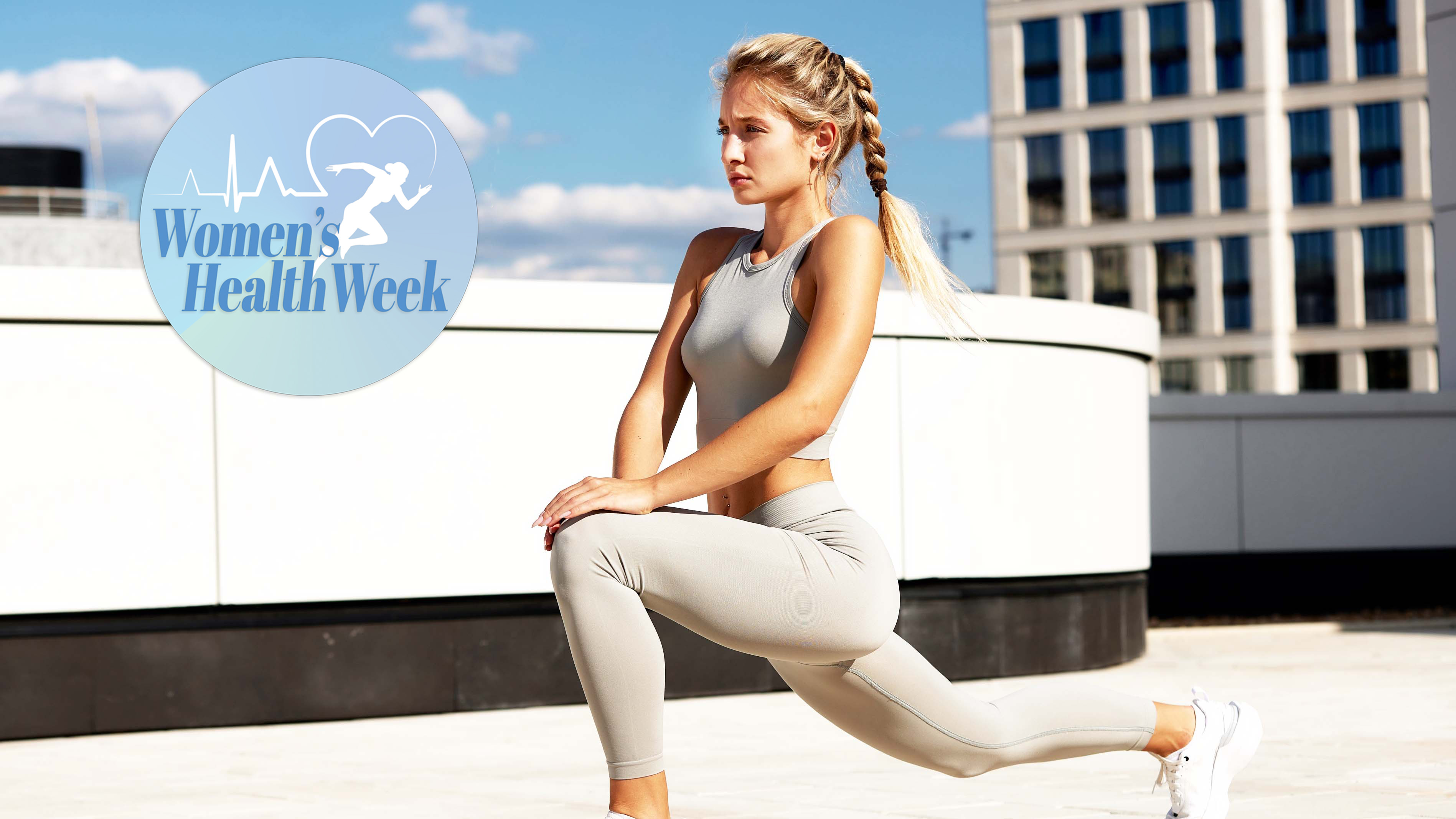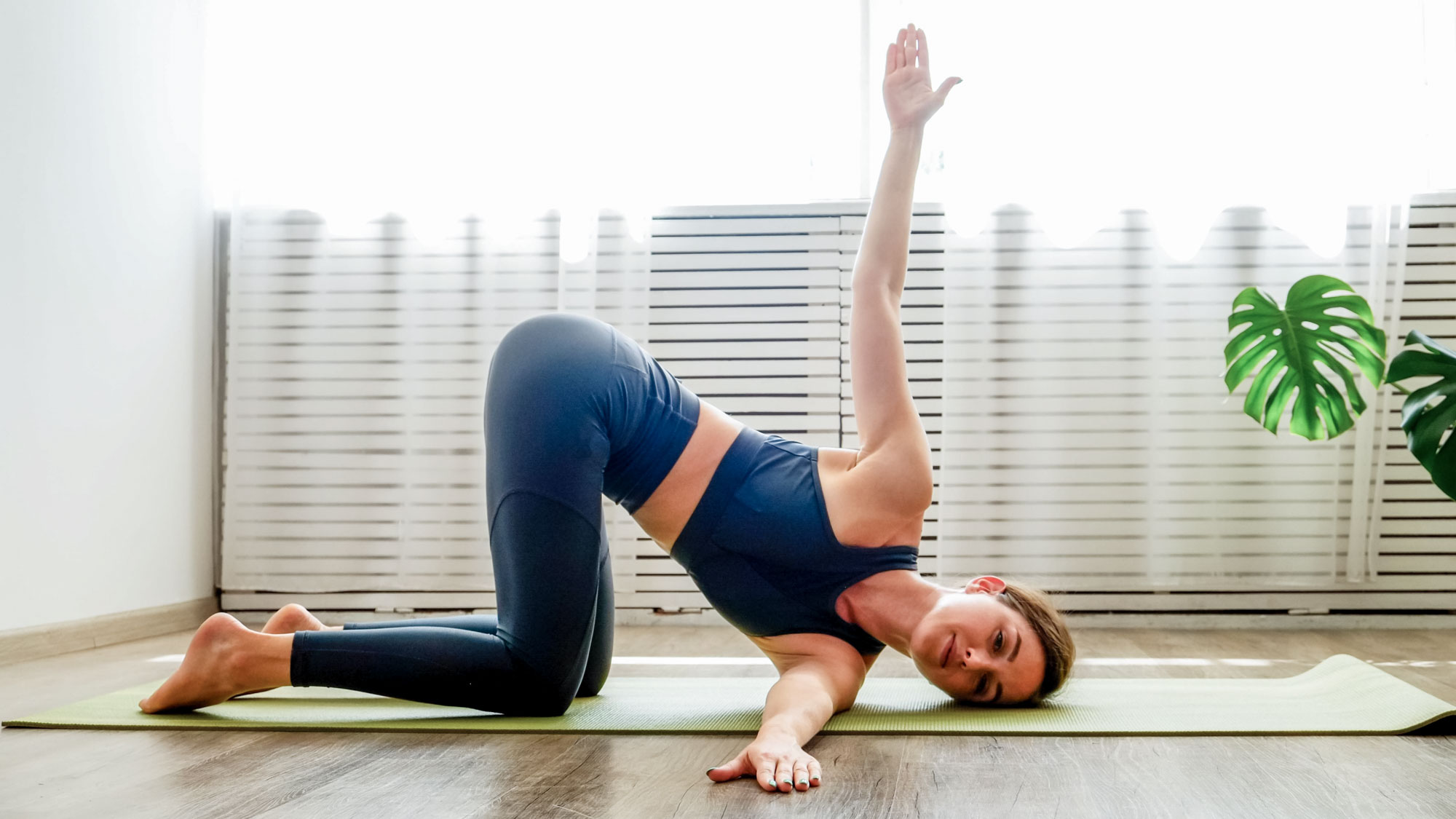Exercising during your period — what to do and what to avoid, according to experts

For anyone who menstruates, you’ll know that your hormones can affect how you feel at different times in your cycle. However, did you know these hormones can also impact your athletic performance? If you didn’t, you’re not alone — a 2019 study conducted by researchers at St Mary's University in Twickenham, England, analyzed more than 14,000 female Strava members. 72 percent of women said they have never received any education regarding exercise and their menstrual cycle.
This article is part of Tom's Guide's Women's Health Week — a series of content that explores how technology and the right workouts can support and empower women through every phase of life.
If you have a ‘normal’ menstrual cycle — the monthly process where the rise and fall of certain hormones prepares your body for a possible pregnancy — then you will have, on average, 450 periods throughout a lifetime. So, it makes sense to understand what’s happening in your body and how movement can help. Research has continually found that exercise can help to beat a bad mood and even boost dwindling energy levels.
You might have heard about exercise cycling, but below we spoke to the experts on how best to exercise during your period.
The menstrual cycle — a breakdown
Although the average length of a menstrual cycle is 28 days, it can be anywhere between 21 to 35 days long.
Chloe Thomas, a personal trainer, women’s health and mindset coach, and the founder of Chloe Inspires Coaching explains, “The first day of your period bleed is day one of your cycle. This is when the hormones progesterone and oestrogen are at their lowest.”
Next is the follicular phase, which begins once your period ends. “Here, oestrogen is starting to rise again, which is why you typically have more energy,” says Chloe.
Around halfway through your cycle, you enter the ovulation stage of your cycle. This is the shortest phase, but it is when you usually feel your best, as oestrogen peaks and the luteinising hormone surges. The surge of luteinising hormone causes the release of an egg from the ovary, known as ovulation. The egg travels down the fallopian tube towards the uterus.
Get instant access to breaking news, the hottest reviews, great deals and helpful tips.
“You may feel confident, strong, and focused with a high libido,” adds Chloe. Ovulation is the most fertile point of the menstrual cycle.
After ovulation, you’ll enter the luteal phase. “This is when the hormone progesterone starts to rise and oestrogen starts to drop. You’ll experience tiredness, cravings, bloating, and mood swings too,” explains Chloe. If no pregnancy has taken place, progesterone and oestrogen levels drop, triggering the start of menstruation. Then, the cycle begins again.
“It’s important to note that we are all different and have different levels of hormones. Some women are more affected by Premenstrual Syndrome (PMS) than others for example,” says Chloe.

How to exercise during your period
1. Don’t chase PBs
Hoping to lift your heaviest deadlift on day one of your period? While some women might find this easy, for others, bleed week is not a time for hitting those personal bests.
Sarah Campus, a women’s personal trainer, nutrition coach, and founder of LDNMUMSFITNESS says: “Most women feel slightly weaker or less energised during the first couple of days of their period due to low oestrogen and progesterone. Plus, because you’re losing blood, you’re losing iron, which can impact endurance and strength, especially if your iron levels are already low.”
Periods can also affect your sleep and mood, which can also make you feel weak and off your game.
A study in the journal Sports Medicine found that muscle strength is highest in the days following a period, so letting your body rest for a few days is no bad thing. You’ll come back stronger, ready to smash those big lifts!
2. Prioritize low-impact workouts
If you’re feeling tired than usual during your period week, try walking, yoga, Pilates, or even gentle cycling. These low-impact ways to move require less energy than higher-intensity exercise.
If you feel up to it, you can stick to a weight training plan, but Chloe explains that for some women, working with lower reps and using lighter weights might be more comfortable, especially during day one and two of your period.
Chloe adds, “I focus on progressive overload (gradually making workouts harder by increasing weight) in the follicular phase in the lead up to ovulation. I push hard with my sessions and weights, and I do more intense cardio workouts during this phase.”
3. Always warm up and cool down
It’s easy to skip the pre-exercise warm-up and the post-exercise cool-down, but during your period, they are more important than ever, as your muscles and joints will likely feel tighter and stiffer.
Sarah says that during menstruation, your body goes through changes that could affect how you move and recover. “Lower oestrogen levels mean less joint lubrication, which can lead to stiff joints. Prostaglandins — hormone-like chemicals released to help shed the lining of the uterus, which causes a period, can cause cramps, inflammation, and fatigue too.”
Research in the American Journal of Sports Medicine found that hormone levels have an impact on knee joint laxity, with greater levels of stiffness occurring during the early parts of the cycle and decreased stiffness occurring during ovulation.
“Prioritise warm-ups and cool downs and spend extra time warming up to get blood flowing and prepare your muscles and joints,” says Sarah. “Gentle stretching or foam rolling after exercise will help reduce tension and help you to recover.”
But it’s not all bad news, as while you might feel stiffer and more tired during your period week, your chances of actually developing an injury are lower during menstruation. Research from UCL, the University of Bath, and St. Mary’s University found that female football players were six times more likely to experience a muscle injury in the days leading up to their period compared to when they were on their period.
4. Eat right
The foods you eat during your cycle, including your period, can have an impact on how you feel. Research has found that heavy periods can lead to a greater amount of lost iron, which is the most frequent cause of iron-deficient anaemia, where your body doesn’t produce enough red blood cells because the level of iron in your blood is too low.
“You lose iron through menstrual bleeding, which can leave you feeling tired, dizzy, or weaker during workouts. Low iron equals less oxygen delivery to muscles, which in turn can lead to fatigue. Eat red meat, chicken, turkey, spinach, kale, broccoli, and lentils,” says Sarah.
Enjoy magnesium-rich foods too, such as bananas, dark chocolate, leafy greens, pumpkin seeds, and crunchy almonds. “Magnesium helps with muscle relaxation, reducing cramps and helping to beat bloating or water retention,” says Sarah.
Research has found that a combination of 250 milligrams of magnesium plus 40 milligrams of vitamin B6 could help decrease PMS symptoms. These symptoms don’t just occur before your period week, but they can linger on during menstruation too. Find vitamin B6 in foods such as chicken, salmon, sweet potatoes, and avocados.
Although your period cravings might be screaming out for sugary foods, Sarah says that too many sugary snacks can cause blood sugar spikes and crashes, which can leave you feeling irritable and lacking in energy, making exercise even harder.
Ultimately, exercising during menstruation involves listening to your body. For some women, taking it easy and doing light, relaxing exercises such as stretching and yoga might be more preferable. For others, PMS might not be an issue, and exercise can continue as normal.
Either way, understanding your hormones and your cycle, and taking rest when you need, could help you to come back stronger, fitter, and quicker.
More from Tom's Guide
Lucy is a freelance health and fitness journalist as well as a pre and post-natal personal trainer. Although a sweaty gym session (skipping rope is a must) is her favorite way to ‘relax’, she’s also a fan of bingeing on The Office, snacking on chocolate-coated raisins, and fizz-filled brunches with friends.
You must confirm your public display name before commenting
Please logout and then login again, you will then be prompted to enter your display name.

